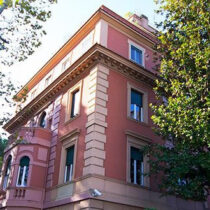The Mines of Lavrion are our main source of information on metallurgic technology in ancient Attica. The exploitation of argentiferous lead for the production of silver had already begun in the 14th century BC in the area of Thorikos, as is evidenced by archaeological data. The full development of the mines, however, does not start before the 6th century BC and reaches its peak in the 5th century BC. The mineshafts reach up to 120 m. depth and are interrupted by pits meant to ventilate the shafts and for the transfer of the extracted metal to the ground level. The tools in use are almost identical with contemporary ones. The extracted metal wasd pounded on large marble or schist slabs or in stone mortars and then it was washed in astonishing even by today’s standards, washing devices. Later, the metal was put in kilns for the precious silver to be separated from the lead. Since a great number of the workers in the mines were slaves, their frequent revolts and other rather unhappy coincidences resulted in the closing down of the mines in the 2nd century BC for almost 2.000 years.
Ancient technology. Metallurgy in Lavrion, Attica
30 Jul 2012
by Archaeology Newsroom
- A
- A
- A


